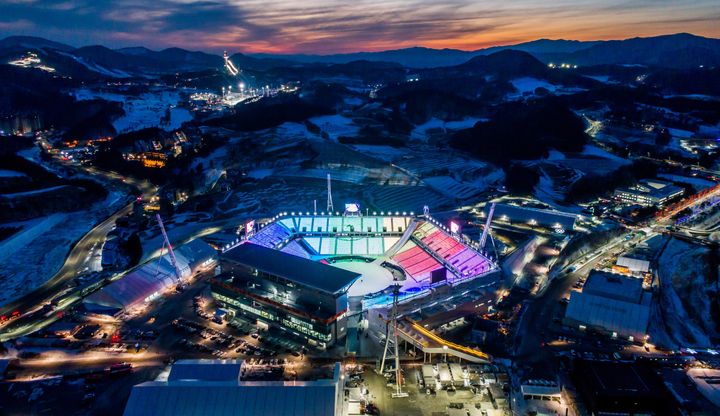
Pyeongchang, South Korea, built itself a brand-new $109 million stadium to host the 2018 Winter Olympic and Paralympic Games. And after just four ceremonial events ― including Friday’s opening festivities ― Pyeongchang is planning to tear the place down.
Ironically, the idea behind tearing down the stadium is to keep it from becoming an immediate white elephant and ever-present reminder of Olympic excess.
The Pyeongchang Games were supposed to be an example of modesty, a reminder that the Olympics didn’t have to burden its host with the record-breaking $50 billion price tag that accompanied the 2014 Winter Games in Sochi, Russia ― and that helped turn much of the world against the idea of hosting the games.
But building a stadium solely to host four ceremonies ― none of which involve actual sports ― feels more like an example of how Pyeongchang fell right into the Olympic trap.
This year’s Winter Olympics will cost an estimated $13 billion ― far short of Sochi’s cost, but still roughly twice what Olympic organizers originally estimated. That maintains an ugly streak for the games: Between 1960 and 2012, every Olympics, winter and summer, has exceeded its initial budget projections, according to researchers at the University of Oxford. The median overrun for the Winter Games, the researchers found, was 109 percent, which means Pyeongchang’s doubling of costs is right in line with budget reality.
Pyeongchang has already warned the South Korean government that the final cost of the games will be too high. Last year, it threatened to slash its own contribution to the Olympic budget.
Those costs rose, as they always do, thanks to largely unnecessary construction projects with little promise of future viability. Organizers built a brand-new ski resort for the Pyeongchang Games, for instance, even though its construction required the partial demolition of a sacred indigenous forest, even though the games have required shuttering other ski resorts, even though there’s little evidence the new site will be used once the Olympics end.
Other Pyeongchang venues share similar legacy concerns. Five months ahead of the games, organizers had no plans at all for post-Olympic use of at least three other newly constructed facilities. On the eve of the games, they still don’t have concrete proposals for the future.
The public justification for hosting these games, in Pyeongchang and across South Korea, is that the first Winter Olympics to grace the Korean Peninsula won’t just improve relations between the North and South but will also boost interest in winter sports and help transform the area “into an Asian winter sports hub.” But who can really predict the first, and the latter seems unlikely.
South Koreans don’t much care for winter sports. In one survey last year, just 35 percent of them reported having any interest in the Olympics, and domestic ticket sales, even for the most popular events, have lagged well behind the normal Olympic pace.
Previous Olympics suggest that the games’ ability to boost participation in sports is nearly as big a myth as their supposed economic and tourism benefits. Organizers of the 2012 London Games really pushed the “sparking public enthusiasm for athletics” goal. Surveys in the six years since have shown that participation in various sports has remained at best steady across the city, while a Parliamentary report last year found that rates of physical activity and sporting participation among children have actually declined since the end of the games.
Concerns about cost and legacy have largely taken a backseat ahead of the Pyeongchang Games for a variety of reasons. The focus on Russia’s doping scandal has sucked up most of the pre-Olympic oxygen. A norovirus outbreak on the eve of the games and the unavoidable security concerns caused by Pyeongchang’s proximity to the North Korean border have absorbed much of the rest. What diplomatic role the 2018 Winter Olympics will play, now and in the future, on the peninsula and in the world seems to be the biggest potential story of the games.
To Pyeongchang’s credit, the city seems ready and the venues complete. There haven’t been any of the major hiccups that typically drive hysteria in the run-up to the Olympics. Indeed, these games feel comparably flawless next to the worries over excessive costs, threats to LGBTQ rights and environmental destruction that surrounded the 2014 Sochi Games; the demolition of poor neighborhoods, the collapsing economy and the lax preparations ahead of Rio de Janeiro’s 2016 Summer Olympics; or the already exorbitant cost increases and environmental problems plaguing Tokyo’s upcoming 2020 Summer Games.
All the normal Olympic features are still present in Pyeongchang: the bloated budget, the environmental degradation, the empty infrastructure legacy. A costly new stadium that will open only four times before it’s ultimately destroyed.
But excess and destruction have become such hallmarks of the Olympics, these hardly feel like problems anymore.
